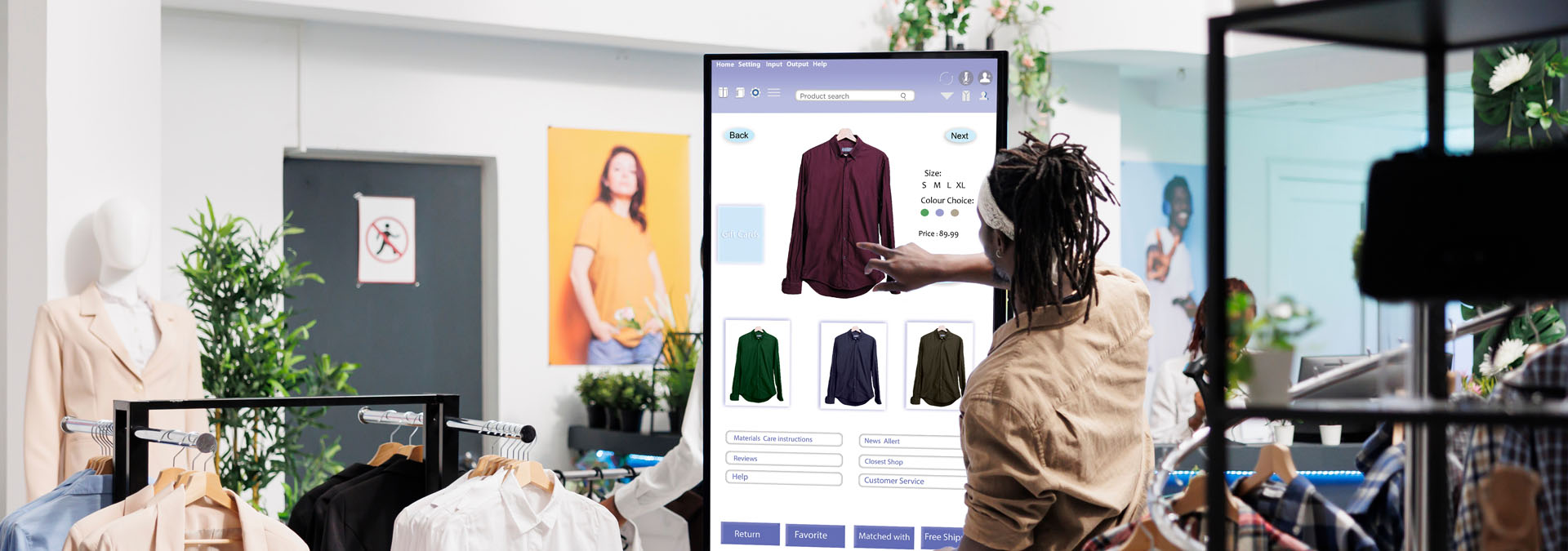The National Retail Federation’s NRF 2025: Retail’s Big Show brought together top experts to discuss the future of the industry. From AI-driven personalization to seamless shopping experiences, here’s what retailers should focus on moving forward.
AI in the retail industry
Retail experts agreed: AI is no longer just a trend—it’s becoming the backbone of modern retail. It can help optimize supply chain logistics, enhance customer engagement, and refine analytics for more strategic decision making.
Experts throughout the conference framed AI as a driving force behind operational efficiency, customer experience, and supply chain innovation. The conversation has moved from 'if' AI should be integrated into retail strategies to 'how' businesses can help maximize its potential.
A few ways retailers are currently using AI:
- Personalized shopping experiences: AI-driven marketing helps retailers predict what customers want, making shopping feel more personal.
- Smarter operations: AI helps stores track inventory and predict demand, reducing waste and saving money. This makes operations more adaptable and gives retailers a better handle on real-time inventories and ideal staffing levels.
- Seamless shopping: AI is making it easier to switch between online and in-store shopping without disruptions. Mobile devices allow customers to access product information, receive personalized recommendations, and complete purchases seamlessly while navigating physical stores.
This blending of digital and physical interactions is creating a more dynamic and engaging shopping journey for consumers, who expect convenience, interactivity, and frictionless transitions between channels.
The challenge of data complexity
Retailers are no longer just thinking about omnichannel strategies—they’re working toward fully unified commerce ecosystems.
Retailers want to connect every part of their business so customers get seamless transitions between in-store, online, and mobile experiences. This includes social commerce, where brands are increasingly turning to platforms like Instagram, TikTok, and YouTube as full-fledged sales channels to engage younger audiences and shorten purchase windows.
Last year, businesses explored unified commerce. This year, they’re making it happen:
- No more silos: Success with unified commerce requires linking all systems together to make real-time updates across channels possible.
- Consistent experiences: When businesses combine all their data, they can keep prices, promotions, and customer messages consistent.
- Blending loyalty and payments: Businesses are embedding payments into their loyalty programs so customers get rewards no matter where they shop.
Even as retailers have access to more data than ever before, many struggle with how to manage it and extract value. Successful omnichannel retail and AI-driven personalization demand clean, organized data. But many organizations are still working through challenges in data integration, security, and usability, making data management a top priority in 2025.
Some retailers are currently using data effectively for things like:
- Real-time data: Stores use analytics to predict trends, adjust prices, and plan inventory.
- Customer-centered metrics: Net Promoter Score, customer lifetime value, and personalization stats are key measures of success.
- Analytics: While AI has huge potential in data analysis, many speakers admitted they’re still figuring out how to use it effectively.
Experience-driven retail is growing
At NRF, retailers shared how they are rethinking store designs, integrating digital touchpoints, and making sustainability a core part of their offerings.
Luxury retail has always been about exclusivity and craftsmanship, but modern consumers expect more than just high-end products; they want immersive, memorable experiences that connect them with a brand’s values and story.
Even non-luxury categories such as groceries are making shopping more engaging with interactive apps, AI-driven checkout, and delivery innovations. This enhanced storytelling extends to sustainability, as grocery retailers focus on highlighting circular economy initiatives such as recycling programs and repurposed packaging.
Adaptability and the future of retail tech
Retailers are embracing cutting-edge technology to stay ahead, but the speed of change requires flexibility. At NRF 2025, leaders emphasized the need for digital transformation strategies that balance efficiency with adaptability.
Emerging technologies such as IoT, RFID, and Edge computing have the potential to enhance efficiency and visibility. However, these innovations also introduce logistical and security challenges that demand integrated, well-orchestrated solutions.
Some standout innovations included:
- Smart shopping carts and robots: Automated checkout and inventory tracking are making stores more efficient.
- 3D body scanners: More precise sizing for online clothes shopping is coming soon to help minimize returns, a burden for retailers and a frustration for customers.
- Interactive screens: New digital displays will enhance in-store experiences, which can also become a new channel for personalization and advertising.
Key takeaways for retailers
To stay competitive, retailers must prioritize adaptability and innovation. Here are the key areas to focus on:
- Use AI wisely: Not just for efficiency, but to improve customer experiences in measurable, visible ways.
- Unify your commerce: Connect systems to create seamless shopping that's effortless and never frustrating for customers.
- Try new tech: From smart carts to digital signage, new tools can drive growth. Emerging technologies such as computer vision, biometrics, and ambient intelligence will further revolutionize personalization, analytics, and customer engagement.
- Support employees: Train and equip them with the best technology.
- Be open about data: Earn the trust of your customers by explaining how their data is used. Then show them how much better data-enriched experiences can be.
NRF 2025 showed that while technology is shaping the future of retail, businesses that balance innovation with authenticity and a personal touch will thrive as technology accelerates its impact across retail in the coming years .
Disclaimer: Case studies, comparisons, statistics, research, and recommendations are provided “AS IS” and intended for informational purposes only and should not be relied upon for operational, marketing, legal, technical, tax, financial, or other advice. Visa neither makes any warranty or representation as to the completeness or accuracy of the information within this document, nor assumes any liability or responsibility that may result from reliance on such information. The information contained herein is not intended as investment or legal advice, and readers are encouraged to seek the advice of a competent professional where such advice is required.

